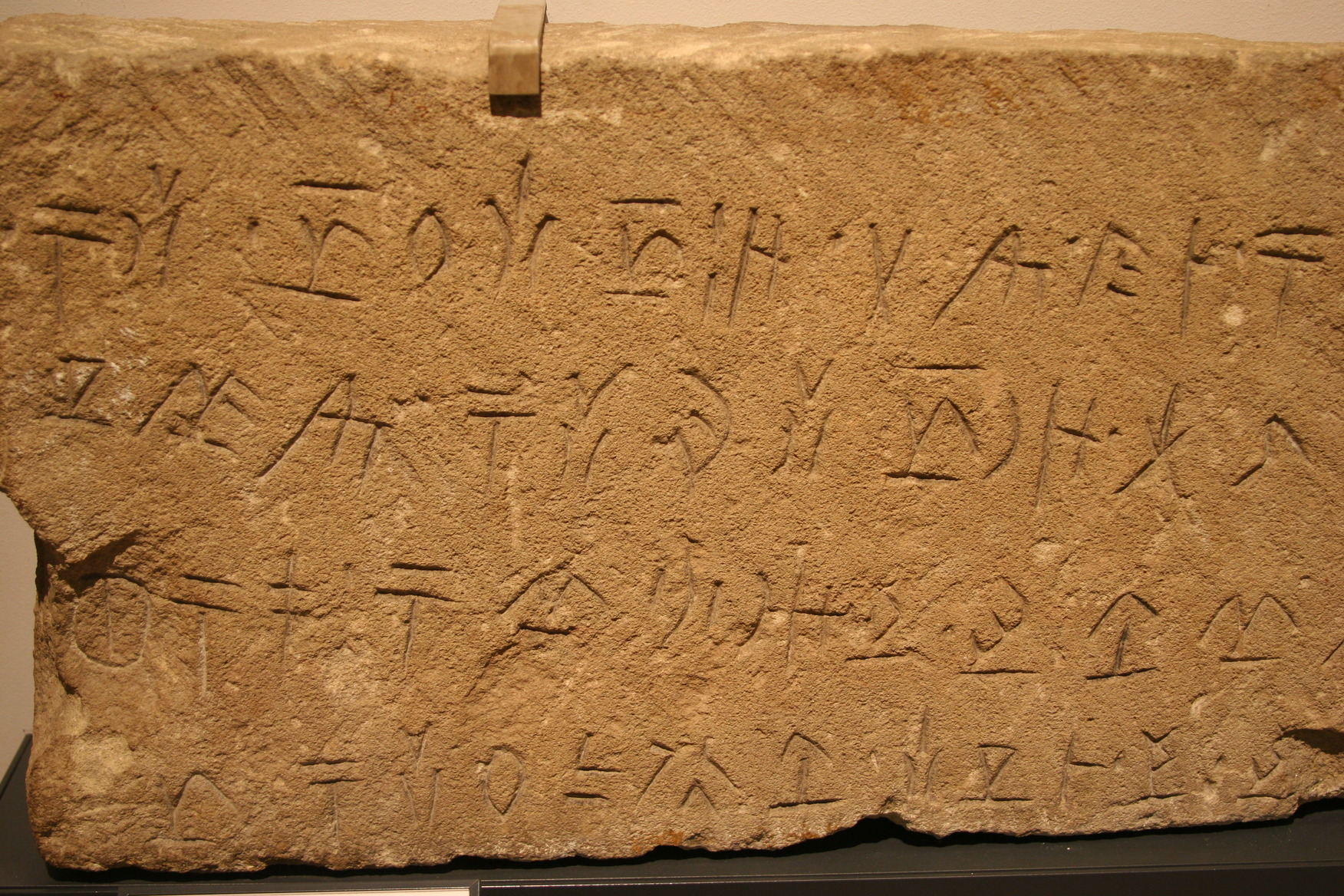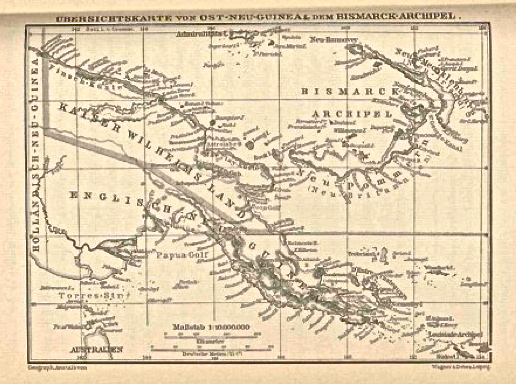|
Aribwatsa Language
Aribwatsa, also known as Lae or Lahe, is an extinct member of the Busu subgroup of Lower Markham languages in the area of Lae, Morobe Province, Papua New Guinea. Descendants of the Aribwatsa language community have mostly switched to the Bukawa language, which is spoken all along the north coast of the Huon Gulf Huon Gulf is a large gulf in eastern Papua New Guinea. It is bordered by Huon Peninsula in the north. Both are named after French explorer Jean-Michel Huon de Kermadec. Huon Gulf is a part of the Solomon Sea. Its northern boundary is marked by C ... and in several villages on the south coast. References * *Wurm, S.A. editor. ''Some Endangered Languages of Papua New Guinea: Kaki Ae, Musom, and Aribwatsa''. D-89, vi + 183 pages. Pacific Linguistics, The Australian National University, 1997. Markham languages Extinct languages of Oceania Languages of Morobe Province {{NNGuinea-lang-stub ... [...More Info...] [...Related Items...] OR: [Wikipedia] [Google] [Baidu] |
New Guinea
New Guinea (; Hiri Motu: ''Niu Gini''; id, Papua, or , historically ) is the world's second-largest island with an area of . Located in Oceania in the southwestern Pacific Ocean, the island is separated from Australia by the wide Torres Strait, though both landmasses lie on the same continental shelf. Numerous smaller islands are located to the west and east. The eastern half of the island is the major land mass of the independent state of Papua New Guinea. The western half, known as Western New Guinea, forms a part of Indonesia and is organized as the provinces of Papua, Central Papua, Highland Papua, South Papua, Southwest Papua, and West Papua. The largest cities on the island are Jayapura (capital of Papua, Indonesia) and Port Moresby (capital of Papua New Guinea). Names The island has been known by various names: The name ''Papua'' was used to refer to parts of the island before contact with the West. Its etymology is unclear; one theory states that ... [...More Info...] [...Related Items...] OR: [Wikipedia] [Google] [Baidu] |
Malayo-Polynesian Languages
The Malayo-Polynesian languages are a subgroup of the Austronesian languages, with approximately 385.5 million speakers. The Malayo-Polynesian languages are spoken by the Austronesian peoples outside of Taiwan, in the island nations of Southeast Asia (Indonesian and Philippine Archipelago) and the Pacific Ocean, with a smaller number in continental Asia in the areas near the Malay Peninsula. Cambodia, Vietnam and the Chinese island Hainan serve as the northwest geographic outlier. Malagasy, spoken in the island of Madagascar off the eastern coast of Africa in the Indian Ocean, is the furthest western outlier. The languages spoken south-westward from central Micronesia until Easter Island are sometimes referred to as the Polynesian languages. Many languages of the Malayo-Polynesian family show the strong influence of Sanskrit and Arabic, as the western part of the region has been a stronghold of Hinduism, Buddhism, and, later, Islam. Two morphological characteristics of t ... [...More Info...] [...Related Items...] OR: [Wikipedia] [Google] [Baidu] |
Oceanic Languages
The approximately 450 Oceanic languages are a branch of the Austronesian languages. The area occupied by speakers of these languages includes Polynesia, as well as much of Melanesia and Micronesia. Though covering a vast area, Oceanic languages are spoken by only two million people. The largest individual Oceanic languages are Eastern Fijian with over 600,000 speakers, and Samoan with an estimated 400,000 speakers. The Gilbertese (Kiribati), Tongan, Tahitian, Māori, Western Fijian and Tolai ( Gazelle Peninsula) languages each have over 100,000 speakers. The common ancestor which is reconstructed for this group of languages is called Proto-Oceanic (abbr. "POc"). Classification The Oceanic languages were first shown to be a language family by Sidney Herbert Ray in 1896 and, besides Malayo-Polynesian, they are the only established large branch of Austronesian languages. Grammatically, they have been strongly influenced by the Papuan languages of northern New Guinea, ... [...More Info...] [...Related Items...] OR: [Wikipedia] [Google] [Baidu] |
Western Oceanic Languages
The Western Oceanic languages is a linkage of Oceanic languages, proposed and studied by . Classification The West Oceanic linkage is made up of three sub-linkages:. * North New Guinea linkage * Meso-Melanesian linkage *Papuan Tip linkage The center of dispersal was evidently near the Willaumez Peninsula on the north coast of New Britain New Britain ( tpi, Niu Briten) is the largest island in the Bismarck Archipelago, part of the Islands Region of Papua New Guinea. It is separated from New Guinea by a northwest corner of the Solomon Sea (or with an island hop of Umboi the D .... Notes References * * {{Austronesian languages Oceanic languages ... [...More Info...] [...Related Items...] OR: [Wikipedia] [Google] [Baidu] |
Huon Gulf Languages
The Huon Gulf languages are Western Oceanic languages spoken primarily in Morobe Province of Papua New Guinea. They may form a group of the North New Guinea languages, perhaps within the Ngero–Vitiaz branch of that family. Unusually for Oceanic languages, two North Huon Gulf languages, Bukawa and Yabem, are tonal. The only other tonal Oceanic languages are found in New Caledonia. Classification According to Lynch, Ross, & Crowley (2002), the structure of the family is as follows: Lynch, John, Malcolm Ross & Terry Crowley. 2002. ''The Oceanic languages.'' Richmond, Surrey: Curzon Press. * North Huon Gulf linkage * Markham family * South Huon Gulf linkage * Numbami Proto-Huon Gulf Proto-Huon Gulf was reconstructed by Malcolm Ross in 1986 in ''Proto-Oceanic and the Austronesian Languages of Western Melanesia''. It is reconstructed on the basis of shared phonological, morphosyntactic In linguistics, morphology () is the study of words, how they are formed, and their rel ... [...More Info...] [...Related Items...] OR: [Wikipedia] [Google] [Baidu] |
Markham Languages
The Markham languages form a family of the Huon Gulf languages. It consists of a dozen languages spoken in the Ramu Valley, Markham Valley and associated valley systems in the lowlands of the Madang and Morobe Provinces of Papua New Guinea. Unlike almost other Western Oceanic languages of New Guinea, which are spoken exclusively in coastal areas, many Markham languages are spoken in the mountainous interior of Morobe Province, Papua New Guinea, where they are in heavy contact with Trans-New Guinea languages. Although the Markham languages are Austronesian, they have had much contact with neighboring Papuan languages. A phonological reconstruction of Proto-Markham is presented in Holzknecht (1989) and is summarized below. Languages Labu (= Hapa) ;Lower Markham: Aribwaung (= Aribwaungg, Yalu), Aribwatsa† (= Lae, Lahe), Musom, Nafi (= Sirak), Duwet (= Guwot, Waing), Wampar, Silisili (Middle Watut), Maralango (South Watut), Dangal (South Watut) ;Upper Markham: Adzera ( ... [...More Info...] [...Related Items...] OR: [Wikipedia] [Google] [Baidu] |
Lower Markham Languages
The Markham languages form a family of the Huon Gulf languages. It consists of a dozen languages spoken in the Ramu Valley, Markham Valley and associated valley systems in the lowlands of the Madang and Morobe Provinces of Papua New Guinea. Unlike almost other Western Oceanic languages of New Guinea, which are spoken exclusively in coastal areas, many Markham languages are spoken in the mountainous interior of Morobe Province, Papua New Guinea, where they are in heavy contact with Trans-New Guinea languages. Although the Markham languages are Austronesian, they have had much contact with neighboring Papuan languages. A phonological reconstruction of Proto-Markham is presented in Holzknecht (1989) and is summarized below. Languages Labu (= Hapa) ;Lower Markham: Aribwaung (= Aribwaungg, Yalu), Aribwatsa† (= Lae, Lahe), Musom, Nafi (= Sirak), Duwet (= Guwot, Waing), Wampar, Silisili (Middle Watut), Maralango (South Watut), Dangal (South Watut) ;Upper Markham: Adzera (di ... [...More Info...] [...Related Items...] OR: [Wikipedia] [Google] [Baidu] |
Extinct Language
An extinct language is a language that no longer has any speakers, especially if the language has no living descendants. In contrast, a dead language is one that is no longer the native language of any community, even if it is still in use, like Latin. A dormant language is a dead language that still serves as a symbol of ethnic identity to a particular group. These languages are often undergoing a process of revitalisation. Languages that currently have living native speakers are sometimes called modern languages to contrast them with dead languages, especially in educational contexts. In the modern period, languages have typically become extinct as a result of the process of cultural assimilation leading to language shift, and the gradual abandonment of a native language in favour of a foreign ''lingua franca'', largely those of European countries. As of the 2000s, a total of roughly 7,000 natively spoken languages existed worldwide. Most of these are minor languages ... [...More Info...] [...Related Items...] OR: [Wikipedia] [Google] [Baidu] |
Morobe Province
Morobe Province is a province on the northern coast of Papua New Guinea. The provincial capital and largest city is Lae. The province covers 33,705 km2, with a population of 674,810 (2011 census), and since the division of Southern Highlands Province in May 2012 it is the most populous province. It includes the Huon Peninsula, the Markham River, and delta, and coastal territories along the Huon Gulf. The province has nine administrative districts. At least 101 languages are spoken, including Kâte and Yabem language. English and Tok Pisin are common languages in the urban areas, and in some areas pidgin forms of German are mixed with the native language. History Nomenclature The Morobe Province takes its name from former German administration center of ''Morobe'' southeast of the Lae. Under German administration, Morobe (meaning post) was named Adolfhafen for the German Deutsch Neuguinea-Kompagnie's Adolf von Hansemann and German word ''hafen'' (''heɪfən'') meaning port) ... [...More Info...] [...Related Items...] OR: [Wikipedia] [Google] [Baidu] |
Papua New Guinea
Papua New Guinea (abbreviated PNG; , ; tpi, Papua Niugini; ho, Papua Niu Gini), officially the Independent State of Papua New Guinea ( tpi, Independen Stet bilong Papua Niugini; ho, Independen Stet bilong Papua Niu Gini), is a country in Oceania that comprises the eastern half of the island of New Guinea and its offshore islands in Melanesia (a region of the southwestern Pacific Ocean north of Australia). Its capital, located along its southeastern coast, is Port Moresby. The country is the world's third largest island country, with an area of . At the national level, after being ruled by three external powers since 1884, including nearly 60 years of Australian administration starting during World War I, Papua New Guinea established its sovereignty in 1975. It became an independent Commonwealth realm in 1975 with Elizabeth II as its queen. It also became a member of the Commonwealth of Nations in its own right. There are 839 known languages of Papua New Guinea, on ... [...More Info...] [...Related Items...] OR: [Wikipedia] [Google] [Baidu] |
Bukawa Language
Bukawa (also known as Bukaua, Kawac, Bugawac, Gawac) is an Austronesian language of Papua New Guinea. Overview Bukawa is spoken by about 12,000 people (in 2011) on the coast of the Huon Gulf, Morobe Province, Papua New Guinea. The most common spelling of the name in both community and government usage is Bukawa (Eckermann 2007:1), even though it comes from the Yabem language, which served as a church and school lingua franca in the coastal areas around the Gulf for most of the 20th century. This ethnonym, which now designates Bukawa-speakers in general, derives from the name of a prominent village Bugawac (literally 'River Gawac', though no such river seems to exist) at Cape Arkona in the center of the north coast. Ethnologue notes that 40% of Bukawa speakers are monolingual (or perhaps were in 1978). This claim is hard to credit unless one discounts both Tok Pisin, the national language of Papua New Guinea, and Yabem, the local Lutheran mission lingua franca. The anthropo ... [...More Info...] [...Related Items...] OR: [Wikipedia] [Google] [Baidu] |


